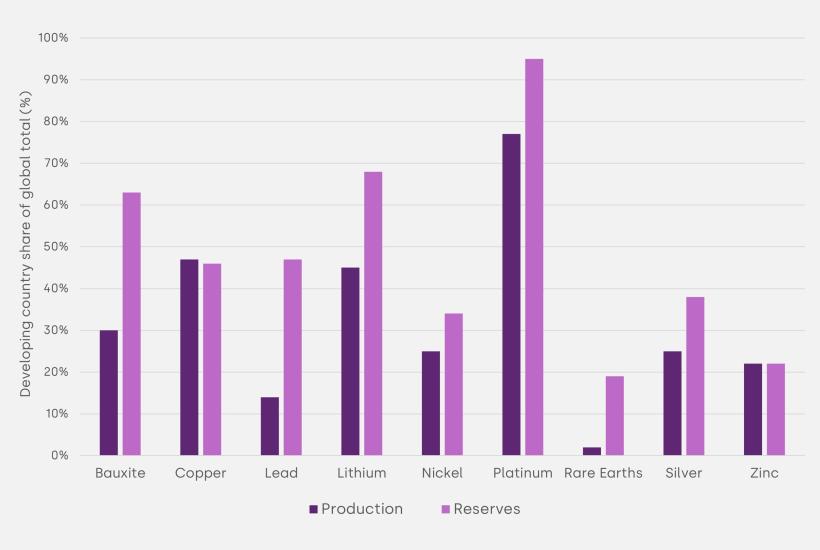
How developing countries can embrace change and reap opportunities from sustainable urbanisation
Cities are the most viable solution to managing the impacts of climate change, particularly in lower-income contexts. Sustainable urbanisation holds opportunities for resilience and economic growth, considering this potential alongside the costs will allow cities to unlock productivity and liveability gains, while also contributing to sustainability objectives.
It is well known that climate change will cause devastation and that the poorest will be hardest hit. In Africa, inaction is already costing the economy 10 to 15% of GDP annually.
Yet, the opportunities brought about by the green transition should not be overlooked. The consequences of climate change call for a new, environmentally sustainable and inclusive approach to economic growth. This needs to be strategically harnessed to align climate goals with those of development and poverty alleviation.
Cities are where many of these opportunities will play out.
Firstly, living in cities can protect against climate vulnerabilities. They are the most viable solution to managing the impacts of climate change, particularly in lower-income contexts. Secondly, cities play a central role in spurring innovation, as well as trade and work opportunities.
Pursuing these objectives at a local level requires doing ‘current things more sustainably,’ doing ‘new sustainable things’ and proactively adjusting to ‘shrinking opportunities.’ This is dissected below.
Improving liveability prospects through sustainable urbanisation
Climate-induced migration, driven by declining agricultural productivity and extreme weather events, will compound economically driven rural exoduses to cities. Well-managed urban centres can aid resilience against environmental shocks and stressors through the provision of local public goods and services.
Mitigation is also achieved through denser urban form and investments in renewable energy technologies, which hold various levels of potential in African countries.
As shown in Figure 1 below, the shared socio-economic path (SSP) 1, which models a much higher commitment to adaptation and mitigation, is correlated with much higher urbanisation levels than SSP 3, which models a situation closer to business-as-usual.
Figure 1: Urbanisation under different shared socio-economic pathways
Notes: Urbanisation is much higher in scenario SSP1, associated with a greater commitment towards adaptation and mitigation Image: Based on author's calculations using data from Riahi et al. (2017).
Doing ‘current things more sustainably’ simply by doubling down on efficient city management can already contribute to climate adaptation and mitigation. Urban amenities, such as the provision of basic water, sanitation and hygiene infrastructure, can provide a buffer to shocks and increased density and improved urban land use planning reduces transport and other infrastructure-related emissions by a quarter when compared to the current trend of urban sprawl.
Further to this, cities can work on ‘doing new sustainable things.’ The changing climate will require new actions to ensure liveability. In coastal cities, new hard infrastructure, such as sea walls, may be necessary to balance with soft infrastructure, such as mangrove protection or afforestation as part of new climate agreements. In rapidly warming cities, finding ways to reduce super pollutants — which absorb sunlight and increase temperatures at a higher rate than carbon dioxide — is another area of focus.
Finally, cities should put plans in place to continuously adjust to shrinking opportunities. Decisions made today on issues such as private car use or construction materials will have long-term consequences, as the typical lifespan of urban infrastructure and the built environment is approximately 125 and 75 years respectively. Cities should avoid locking in high-carbon development paths, which are harder and more expensive to retrofit, and embed climate considerations in their investment plans.
Improving productivity and job creation prospects through sustainable urbanisation
Transitioning to a net zero economy requires consumers, firms, markets and governments to adapt to new patterns of production and consumption. Importantly, the transition will be underpinned by innovation — encompassing the development and deployment of low-carbon technologies and sustainable practices across the economy. The transition offers many growth opportunities for developing African cities, as well as the opportunity to spur job creation at both high- and low-skill spectrums.
These cleaner technologies and practices allow cities to do ‘current things more sustainably’ by improving their resource efficiency, while also improving productivity overall. Building the cities of tomorrow, for example, can drive employment in labour-intensive sectors, such as the construction industry, while driving growth given the externalities generated, as indicated through this programme in Zambia.
Similarly, cities can do ‘new sustainable things’ as new markets and associated value chains are created to serve the international demand. African countries will hold new and varying comparative advantages in this changing economy. These include natural endowments, as well as the technical expertise to manufacture and export intermediate goods that are critical in a net zero world. In Zimbabwe, for example, the country’s large nickel reserves could be used to produce intermediate goods in renewable battery production. Figure 2 shows the related gap between mining production and reserves of critical minerals required for low-carbon technologies — an opportunity that could be exploited.
Importantly, cities should be forward-looking and actively ‘adjust to shrinking opportunities’ by diversifying away from coal and associated value chains — whether by shifting to other minerals in demand (Figure 2), exploiting their renewable energy potential or moving into industries without smokestacks.
Figure 2: Developing-country production and reserves of critical net zero minerals

Notes: Data from Arrobas et al. (2017).
Align local objectives of growth and poverty alleviation with global goals for a net zero transition
Sustainable urbanisation holds both opportunities for resilience and economic growth. Considering this potential alongside the costs will allow cities to unlock productivity and liveability gains, while also contributing to sustainability objectives. Developing-country cities, supported by national and international agents, need to be proactive in investing in the infrastructure and skills needed to get ahead of the curve to reap the rewards of this transition.
This article was first published in the World Economic Forum. To learn more, read our growth briefs on Sustainable urbanisation in developing countries: Cities as places to live and Sustainable urbanisation in developing countries: Cities as places to innovate, trade, and work.

